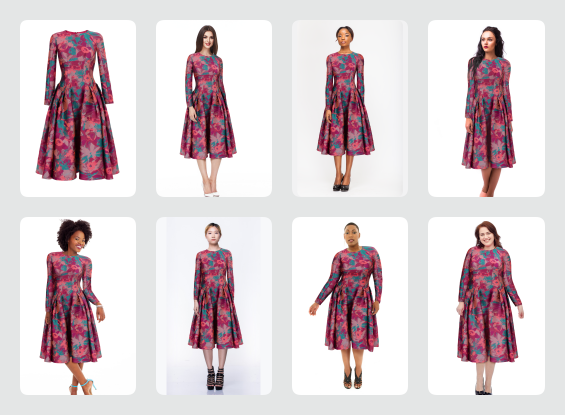Humans and Artificial Intelligence have something in common. They are both biased, according to the brand managers, web designers, futurists, and UX design agencies that have experienced data set bias in the fashion and beauty industry first-hand.
Bias can be part and parcel of being human, based on personal experiences and assumptions, which can lead, for example, web or UX designers to unwillingly exclude entire customer-types in the artificial intelligence and data set.
“Just like the humans that design it, AI can have bias”, according to a Vogue Business report.
In fashion and beauty, for example, this “might manifest as online searches showing only certain types of models, or an image-matching engine mistaking legs for dark jeans,” according to the fashion magazine’s newsletter Technology Edit.
Keeping an inclusive mindset when it comes to AI design will not only avoid a serious search design faux pas for yourself but your client. AI should be inclusive by design and extended into the discussions with all clients, regardless of industry.
On-trend: contactless imagery
According to US-based AI retail specialist Vue.ai, 86% of retailers will invest in AI and Machine Learning this year. One area in particular that will see growth is contactless imagery, the process of building product photos without elaborate photoshoots. This in-demand solution is a trend that could spur demand for AI contractor skills, especially within the online retail sector and related segments from beauty to groceries.
Using basic product image inputs, Vue.ai, developed an AI product imagery solution that creates high-quality on-model photos for sites, which can simplify processes and remove the need for multiple resources, staff, and related photoshoot costs.
Julia Dietmar Chief Product Officer at Vue.ai, explains how the business has developed a technology that can generate images of how a garment looks on models of different sizes.
“The average American [female] model is about 6’ tall, size 0 and the average American consumer is 5’ 4”, size 14. Garments get returned because the fit is not there, or the opposite happens where the customer doesn’t even buy it because she thinks, ‘there is no way I am going to be able to pull it off’. But when she sees that dress in different sizes or in a body of her size, she’ll think ‘wow that actually looks pretty good,’ so we can actually increase conversions and purchase but also decrease returns,” says Dietmar.
AI and UX Designers should be mindful that if they limit their client’s data, they limit their client’s customer base, and in the process could even tarnish their brand image and reputation if seen to exclude a wider customer demographic.

Stock photography companies and libraries, such has Pexels are intentionally creating algorithms that generate diverse results, said the Vogue Business report. Adding human curators to review and adjust any automated content is also advised.
Once an inclusive data set is created, then even more user data can be extrapolated to predict customer likes and dislikes through searches and purchases. But you need to ensure you have an inclusive mindset right from the start to make the right impression.


